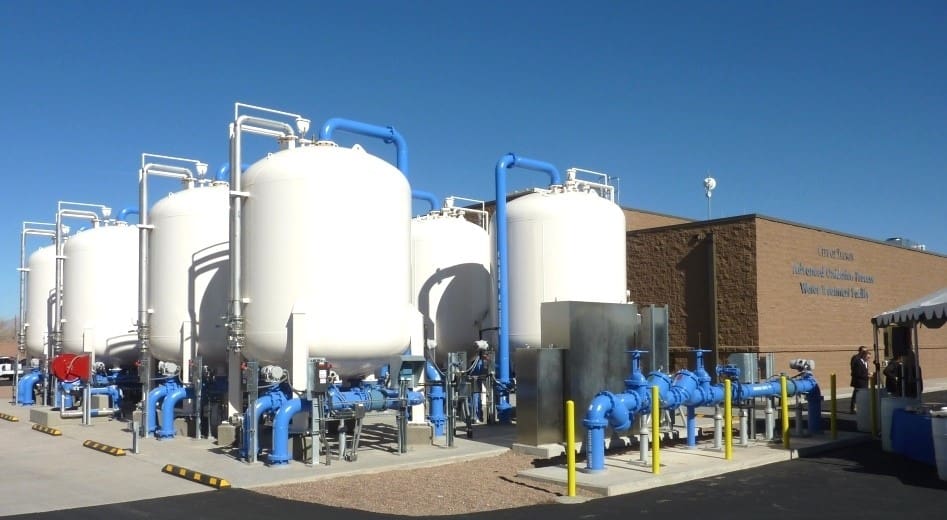Ingenious PFAS Treatment Solutions for Safer Water
The enhancing occurrence of PFAS contamination in water supplies demands a critical exam of ingenious treatment remedies. Advanced filtering modern technologies and novel chemical therapies present appealing avenues for lowering these persistent toxins. In addition, arising bioremediation strategies provide an even more lasting method to taking on PFAS difficulties. As governing frameworks continue to adjust, understanding the efficiency and scalability of these solutions ends up being extremely important. What implications do these innovations hold for public health and environmental reconstruction, and how can stakeholders successfully apply them in diverse contexts?
Overview of PFAS Contamination
PFAS contamination has emerged as a considerable ecological and public wellness problem. Per- and polyfluoroalkyl substances (PFAS) are a group of synthetic chemicals known for their persistence in the atmosphere and human body, leading them to be typically referred to as "permanently chemicals." These substances have actually been commonly made use of in numerous sectors, consisting of firefighting foams, water-repellent textiles, and food product packaging, largely due to their water- and grease-resistant buildings.
The prevalent use PFAS has actually caused their discovery in soil, water supplies, and even in the blood of people and pets. Researches have actually connected PFAS exposure to various health and wellness problems, consisting of developing impacts in infants, immune system dysfunction, and various forms of cancer. In addition, the ecological perseverance of these substances complicates their deterioration and removal, raising issues about long-term environmental influences.
Regulative bodies are significantly implementing strict guidelines to monitor and lower PFAS degrees in drinking water and other environmental tools. As awareness of PFAS contamination grows, it has become necessary for neighborhoods and industries to look for efficient treatment solutions to mitigate exposure and guard public health.
Advanced Filtration Technologies
As the necessity to attend to PFAS contamination increases, progressed filtering technologies have actually become an essential part in the removal efforts targeted at eliminating these persistent chemicals from water sources. These modern technologies take advantage of sophisticated mechanisms to properly target and catch PFAS compounds, which are infamously immune to conventional treatment techniques.
One of one of the most promising strategies is the use of granular activated carbon (GAC), which adsorbs PFAS particles as a result of its high surface and porous framework. This approach has been commonly applied in both community and commercial setups, demonstrating substantial decreases in PFAS concentrations. In addition, ion exchange materials have gotten grip, specifically developed to precisely bind PFAS ions from water, hence promoting their elimination.
Membrane filtration innovations, such as reverse osmosis and nanofiltration, additionally reveal efficiency in PFAS removal by physically separating pollutants from water - pfas management. These systems can accomplish high degrees of pureness, making them ideal for alcohol consumption water applications
Chemical Treatment Developments
Various chemical treatment advancements are being discovered to properly resolve PFAS contamination in water supplies. One promising approach involves the use of advanced oxidation processes (AOPs), which utilize powerful oxidants such as ozone, hydrogen peroxide, or chlorine dioxide incorporated with UV light to damage down PFAS substances right into much less unsafe materials. This method has demonstrated efficacy in laboratory settings, showing prospective for scalability in real-world applications.
One more cutting-edge approach is the development of ion-exchange resins particularly made to target PFAS. These resins can selectively adsorb PFAS compounds from water, permitting their removal during treatment processes. Recent advancements have improved the performance and ability of these materials, making them a positive choice for water therapy facilities.
Furthermore, researchers are investigating the use of chemical representatives like persulfate and ferrous ions to boost the destruction of PFAS in infected water. These agents can induce chain reaction that facilitate the breakdown of relentless PFAS compounds.
Emerging Bioremediation Techniques
Current improvements in chemical treatment developments have led the way for exploring bioremediation strategies as a sensible choice for resolving PFAS contamination. Bioremediation takes advantage of the natural metabolic processes of microbes to weaken or transform pollutants, making it an enticing method for dealing with relentless impurities like PFAS.
Emerging strategies in bioremediation include the usage of genetically engineered microbes that can particularly target and break down PFAS compounds. These microbial pressures are being developed for their improved degradation capacities, enhancing the efficiency of the removal process. Furthermore, researchers are examining the possibility of plant-assisted bioremediation, where certain plant types might uptake and sequester PFAS from polluted dirt and water.
Another appealing method is the application of bioaugmentation, which includes presenting advantageous bacteria right into contaminated atmospheres to enhance the degradation of PFAS. This method can assist in much moved here faster remediation timelines and enhance general performance.

Governing Structures and Standards
A comprehensive regulative framework is necessary for properly taking care of PFAS contamination and ensuring public health protection. The enhancing recognition of per- and polyfluoroalkyl substances (PFAS) as environmental contaminants has prompted various federal and state agencies to develop standards that control their visibility in water products. The United State Environmental Security Company (EPA) has established health advisories and is pursuing establishing enforceable limitations for PFAS in drinking water.
State-level policies vary significantly, with some states adopting more stringent standards than those suggested by the EPA. These policies frequently include optimum pollutant levels (MCLs) for specific PFAS substances, surveillance demands, and reporting obligations for water energies. In addition, emerging frameworks concentrate on the remediation of contaminated websites, highlighting the requirement for effective therapy modern technologies.

Conclusion
In conclusion, the growth and application of ingenious PFAS treatment remedies are essential for attending to the pervasive issue of water contamination. Advanced purification innovations, chemical treatments, and arising bioremediation methods collectively offer a diverse method to effectively lower and deteriorate PFAS levels. As governing frameworks proceed to progress, integrating these modern technologies will be essential to guard pfas treatment public health and wellness and restore the stability of contaminated water resources, ultimately adding to a cleaner and safer setting.